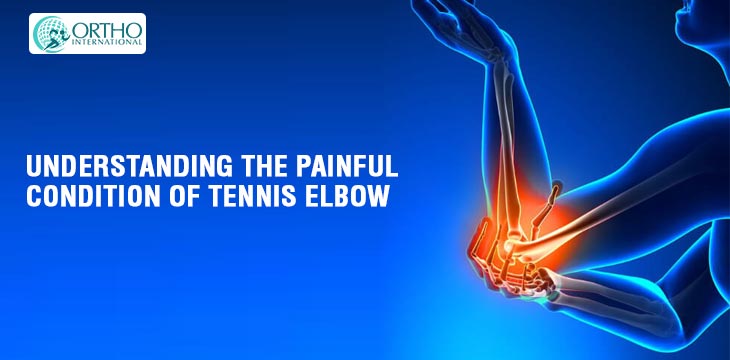Tennis Elbow is precisely called lateral epicondylitis, which is an ailment requiring the degeneration of a tendon’s attachment on the border (lateral) part of the elbow. Modestly, the degeneration provokes pain. The pain may be inhabited on the outside of the elbow, and it can be painful to the touch. This ailment can also create pain throughout the activity, particularly when clasping or elevating things. Sometimes, the pain will progress down your forearm and into the hand.
Tennis elbow is generally generated by overuse, which doesn’t inevitably occur from engaging in tennis. Overuse can be from work-related actions such as typewriting or plumbing, or non-work exercises such as painting. It can also be caused by trauma.
Various Ways Of Managing Tennis Elbow Pain
Seldom, tennis elbow pain will go endlessly on its own. If it doesn’t, here are possible methods for managing this situation like checking the activity generating the pain or altering your method or by intake of Anti-Inflammatory Medication. You can also use a band worn over the muscle of the forearm just under the elbow, which lessens tension on the tendon. Many experts suggest physical therapy which involves stretching or stimulating exercises, ultrasound, or heat methods. Other ways of pain management include going in for a strong anti-inflammatory medicine inserted into the impacted area and even withdrawal of blood from an uninjured site and reinjecting it into the region of the lateral epicondyle.
Tennis Elbow Treatment & Exercise
Roughly 10-50% of tennis professionals experience tennis elbow problems at some point in their careers. But tennis elbow does not only influence tennis professionals but everyone. The lateral epicondyle is a bony protrusion of the parallel side of your elbow, where various muscles included in the expansion of your wrist attached above.
The elbow connection uses two principal movements, flexion, and extension. The associations included are the humerus, radius, and ulna which are the bones of the forearm. The humerus has two condyles, and beyond these condyles are the central and parallel epicondyles. The title is called ‘tennis elbow’ because it is an impairment that happens regularly in tennis, but predominantly when kicking a backhand stroke when the extensor muscles of the forearm are in motion throughout wrist augmentation. Tennis also requires multiple grip variations, which additionally work on the extensor muscles.
Why Does Tennis Elbow Occur?
It is the repeated nature of the tennis stroke more especially the backhand which generates micro-trauma to the ligament. The muscle is incapable to cope with the tensions fixed on it, and the micro-trauma happens. Other circumstances that may generate tennis elbow scenarios include holding on to the strings of the tennis racket being too snug or when the tennis racket is being too large, because of poor technique the poor external circle of the shoulder will place more strain on the elbow, poor plasticity, diminished lower back mobility and tennis elbow remedies. Signs of tennis elbow include injury down the oblique side of the elbow. Gripping is ordinarily very challenging, and choosing up gadgets can be a hurdle. A burning feeling down the forearm is also accepted.
Different Treatment Available For Elbow Ailment
Talking about the treatments it includes various treatment like RICE (rest, ice, compression, and elevation) method, physiotherapy which include stretches, electrotherapy, massage, consumption of Anti-inflammatory drugs (NSAIDS) and Cortisone injection. There are five common stages to work through when approaching a tennis elbow injury, the first is decreasing pain, next reduce swelling, speed up the healing process, sustain modern fitness and strength and finally minimize further harm to the injured area.
Reference
If you are looking for the best sports injury treatment in Delhi, try meeting Dr. Abhishek Mishra, the best orthopedic surgeon in Delhi.
